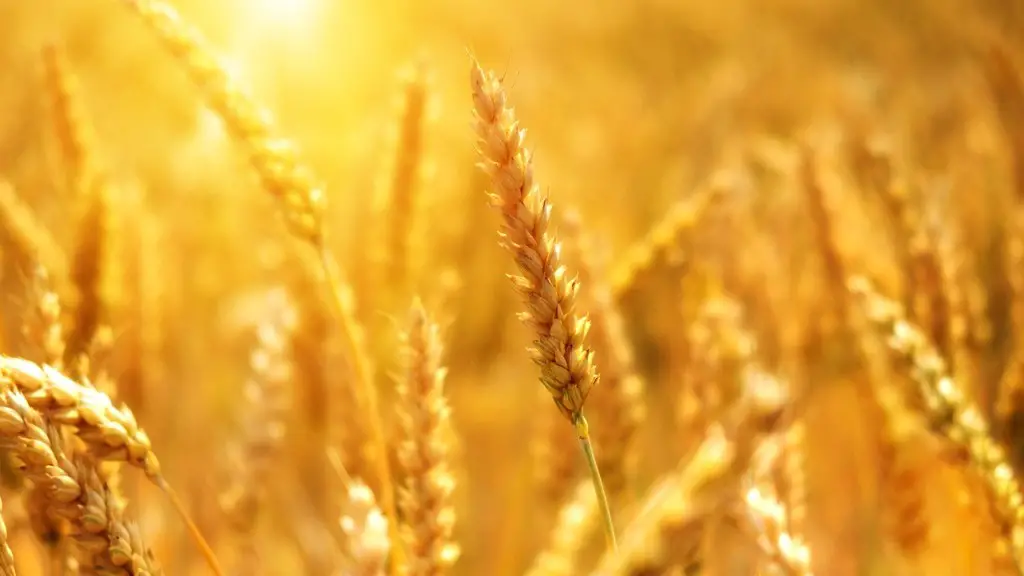Agriculture has seen a huge array of different inventions and improvements over the years. Everything from the creation of the first plows, to the introduction of irrigation systems and more recently the development of genetically modified crops has had an impact. Each invention has helped to make agriculture more efficient and effective, resulting in higher yields and a more reliable food supply.
The steam engine and the combine harvester are two of the most important inventions that have improved agriculture. The steam engine allowed farmers to use machinery to plow their fields, plant their crops, and harvest their crops. The combine harvester allowed farmers to harvest their crops more efficiently and with less manual labor.
What were the 3 important inventions that were created in the Agricultural Revolution?
New tools and advancements in old ones were an important factor in the Agricultural Revolution. The invention of the plough, seed drill, and threshing machine improved the efficiency of agricultural operations and helped to increase food production. This, in turn, led to population growth and the development of civilizations.
The advances in machinery have helped the farmers to cultivate more land and to increase their productivity. The seed, irrigation and fertilizers have also helped the farmers to increase their yields.
What are 5 advancements in agriculture
Precision agriculture is a farm management practice that uses technology to precisely monitor and manage crops. This technology includes GPS systems, sensors, and drones.
Industrial automation is the use of machines, robots, and other technology to perform tasks without human intervention. Automated irrigation systems use sensors to monitor soil moisture levels and then turn on or off the irrigation system accordingly.
Remote monitoring of crops using sensors can help farmers to quickly identify problems with their crops and take action to fix the issue. This can save time and money, and ultimately help to increase crop yields.
Genetically modified crops have been engineered to resist pests, diseases, and herbicides. This can help to increase crop yields and improve the quality of the crops.
Merging datasets can help farmers to more accurately predict weather patterns and understand the impact of climate change on their crops. This information can help farmers to make better decisions about when to plant, how to irrigate, and what crops to grow.
The McCormick reaper was patented in 1834 and John Lane began to manufacture plows faced with steel saw blades in the same year. John Deere and Leonard Andrus began manufacturing steel plows in 1837. The plow was made of wrought iron and had a steel share that could cut through sticky soil without clogging.
What two inventions changed agriculture?
The reaper, thresher, steam engine, combine, automobile, tractor, and hydraulics are all inventions that have changed how farmers produce food. The reaper allows for the efficient harvesting of small grains, the thresher separates the kernels from the straw, the steam engine powers the thresher, the combine collects the grain, the automobile transports the grain, the tractor tills the soil, and the hydraulics lift and move heavy objects.
Precision agriculture and robotic systems are becoming increasingly commonplace in today’s agriculture industry. These advanced technologies allow businesses to be more efficient and profitable, while also being safer and more environmentally friendly.
How was agriculture improved?
Land reforms are necessary for improving production and making farming more efficient. Machines such as tractors and implements make land reforms possible and help make working on the field easier. This in turn leads to an improvement in productivity.
The agricultural industry is constantly evolving and adopting new technologies in order to increase efficiency and productivity. In this article, we will explore some of the latest and most innovative technologies that are changing the way farmers grow, transport, store, and manage their produce. From bee vectoring technologies to precision agriculture and indoor vertical farming, these new technologies are sure to revolutionize the agricultural industry.
How has technology helped in agriculture
The traditional way of farming – applying water, fertilizer and pesticides evenly across the land – is no longer necessary. Farmers can now use the least amount and target very specific areas, or even treat different plants, which results in increased crop productivity.
Drones can be used for a variety of purposes, including agricultural applications such as taking pictures or videos of fields and orchards. Aerobotics leverages its drones to support fruit growers in orchard management, problem tree identification, pest and disease management and yield management. This helps growers to more efficiently manage their crops and improve yields.
What are 4 ways to improve the agriculture?
There is a lot that can be done to increase crop yields and improve food security. Some measures that could be taken include:
-Developing high-yield crops
-Boosting irrigation
-Increasing the use of fertilizers
-Improving market access, regulations, and governance
-Making better use of information technology
-Adopting genetically modified (GM) crops
-Reforming land ownership with productivity and inclusiveness in mind
Each of these measures has the potential to make a significant impact on crop yields and food security. It is important to note that no single measure will be a silver bullet – a comprehensive approach is needed to really improve food security on a global scale.
Over time, agriculture has become increasingly technologically advanced. The tractor was introduced, followed by new tillage and harvesting equipment, irrigation and air seeding technology, all of which has led to higher yields and improved quality of food and fibre.
What inventors changed agriculture
John Deere is best known for inventing the steel plow, which changed agriculture by making it possible to plow fields more easily and quickly.
Cyrus McCormick is best known for inventing the mechanical reaper, which changed agriculture by making it possible to harvest crops more quickly and efficiently.
Cyrus H McCormick invents the first commercially successful reaper, a horse-drawn machine to harvest wheat. He patented the invention in 1834. The reaper revolutionized the farming industry and changed the way wheat was harvested. Prior to the invention of the reaper, farmers had to harvest wheat by hand which was a time-consuming and labor-intensive process. The reaper made it possible to harvest wheat much faster and with less labor.
What were 3 agricultural improvements that were made during the Middle Ages?
The three-crop rotation was a big change in farming during medieval times. It helped to keep the soil fertile and also helped to improve the water mills.
John Deere, one of the most recognizable names in agricultural innovation, was inducted into NIHF for his innovations in plows. Deere, who was born in Vermont in 1804, developed the first successful self-scouring steel plow in 1837. The plow allowed for deeper and more efficient plowing of fields, greatly improving agricultural productivity. Deere’s plow was so successful that it helped turn the American Midwest into the “breadbasket of the world.” Deere’s induction into the NIHF is a well-deserved recognition of his significant contribution to agricultural innovation.
What major change did the invention of agriculture lead to
Farming is one of the most important aspects of human civilization. It enables us to grow all the food we need in one place, with a much smaller group of people. This led to massive population growth, creating cities and trade. Without farming, human civilization would not be where it is today.
The Agricultural Revolution was a period of great change in the way that crops were grown and harvested. One of the most important inventions to come out of this time was the plow. The plow allowed farmers to till the soil more effectively, making it easier to plant and grow crops. Another important invention was the seed drill. This machine helped farmers to plant seeds in a more uniform and efficient way. Other advances in transportation, such as the development of railroads, also helped to improve the efficiency of the agricultural industry.
Conclusion
The invention of the wheelbarrow, the plow, and the seed drill are a few examples of inventions that have improved agriculture.
The invention of the plow was a significant improvement to agriculture as it allowed farmers to more easily till the land. The use of irrigation systems also helped to improve agricultural productivity by providing a reliable source of water for crops.





